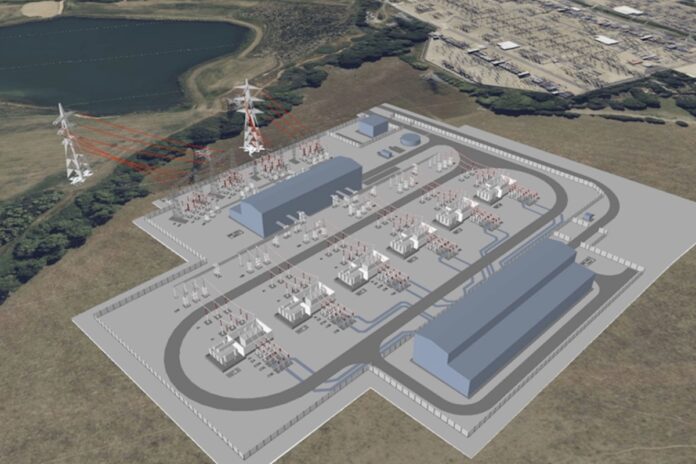National Grid has begun construction of its new Uxbridge Moor substation in Buckinghamshire, a multi-million-pound project that will unlock 1.8 GW of extra grid capacity – enough to power a mid-sized city – and connect more than a dozen data centres on the fringes of London.
The development, which sits alongside the existing but at-capacity Iver 400 kV site, will be the largest new facility on National Grid’s network by capacity. Additionally, both its indoor 400 kV and 132 kV switchhouses will use SF6-free gas-insulated switchgear, cutting the substation’s physical footprint by about 70% and making it more sustainable.
Laura Mulcahy, Project Director at National Grid Electricity Transmission, commented, “Our new Uxbridge Moor substation will provide vital access to power for data centres that are at the heart of Britain’s innovation and economic growth. It will enable new jobs and investment in Buckinghamshire, and will support the UK’s digital future.
“Alongside these significant benefits, we are working to keep the substations’ environmental impact to a minimum. By using the latest SF6-free gas-insulated switchgear, we’re reducing the size of this crucial site by around 70 %, and ensuring its technology is sustainable and resilient long into the future.”
National Grid has appointed Murphy as principal contractor to deliver the two GIS halls, lay underground cables and complete the tie-in to the nearby 400 kV overhead line. Liam Corr, Managing Director of Energy at Murphy, noted, “Since 1951 Murphy has been a leading provider of innovative and integrated energy solutions – today we support groundbreaking transmission and distribution projects across the four countries in which we work.
“We are proud to be delivering this project in the UK’s capital and building on our strong working relationship with National Grid to help to ensure energy security for decades to come.”
Energy Minister Michael Shanks welcomed the start on site. He said, “Upgrades to the electricity network like this are at the heart of building the industries of our future and support our Plan for Change to deliver economic growth and skilled jobs across the UK.
“It comes as we progress our reforms to the grid connections queue that will speed up the time it takes to get high-growth firms, like data centres and AI hubs, plugged into the grid – while also fast-tracking projects that will scale up clean, homegrown power by 2030.”



